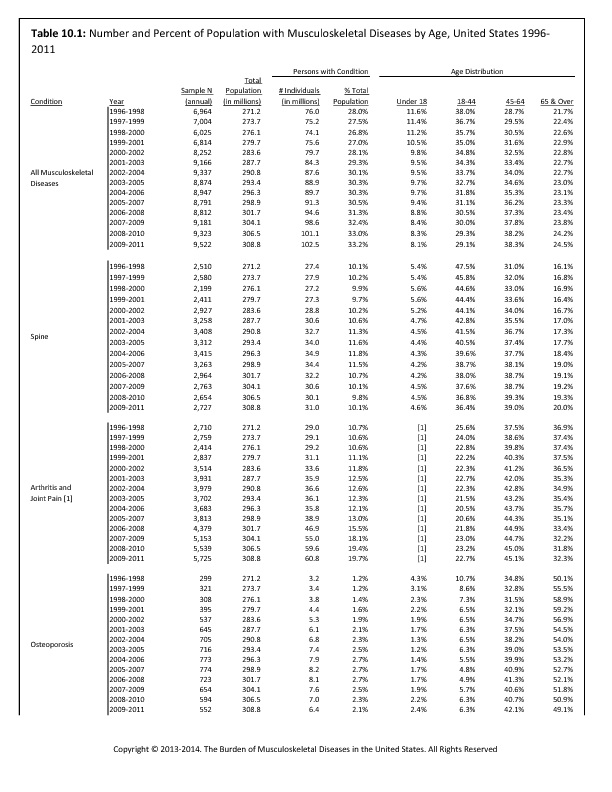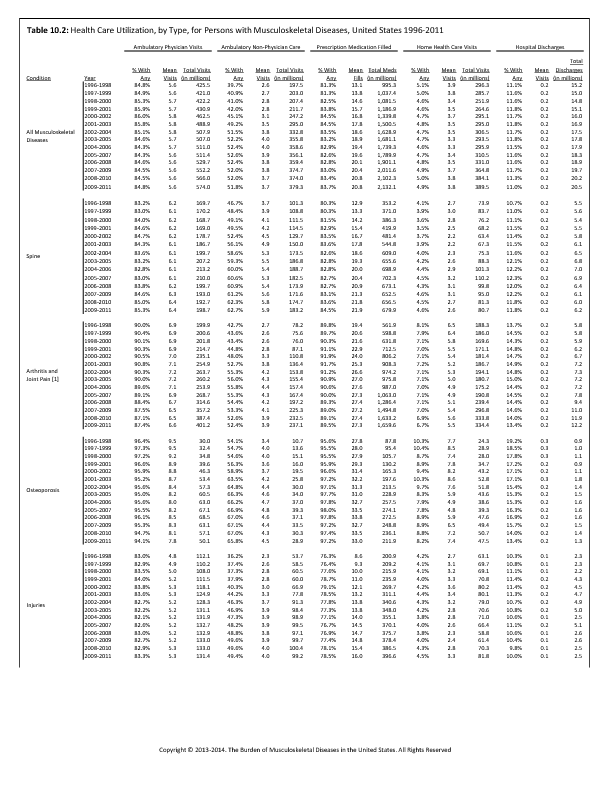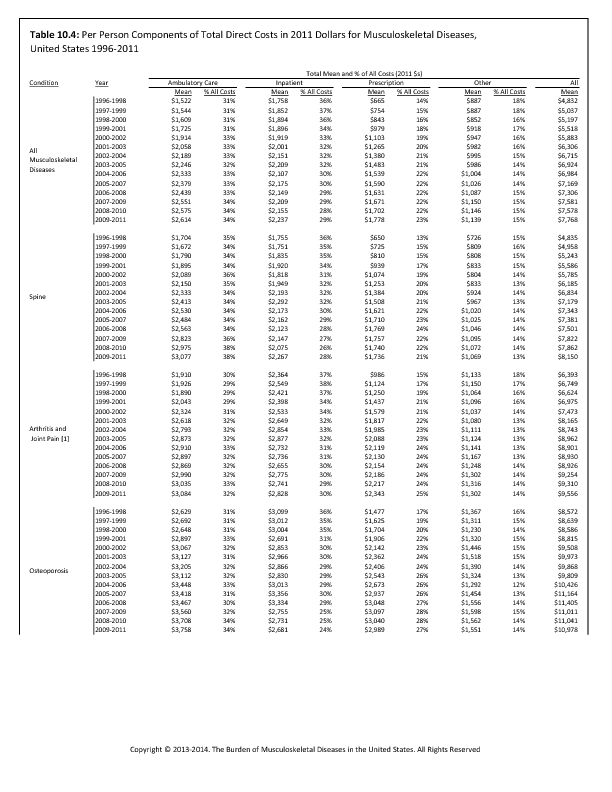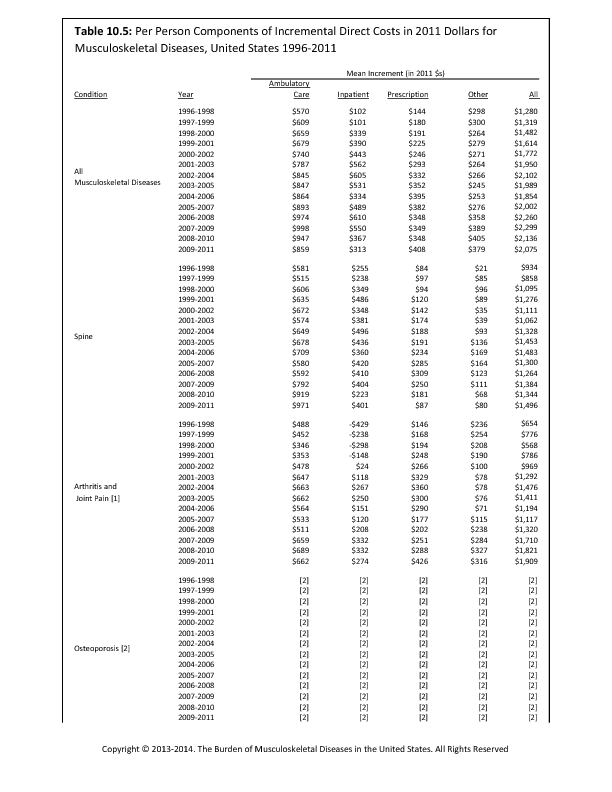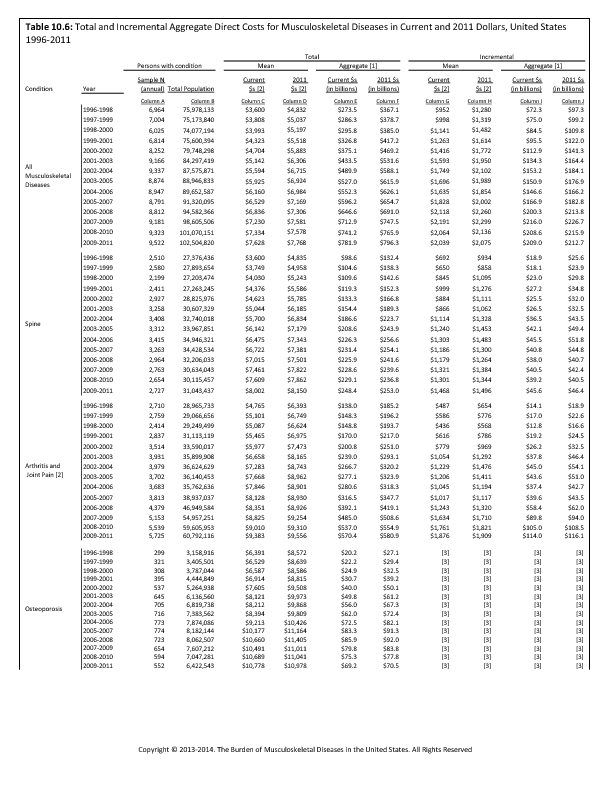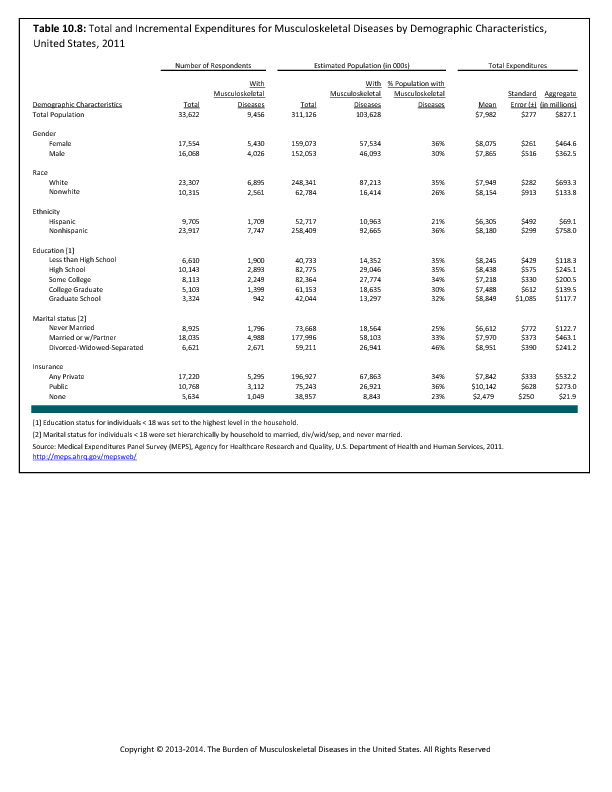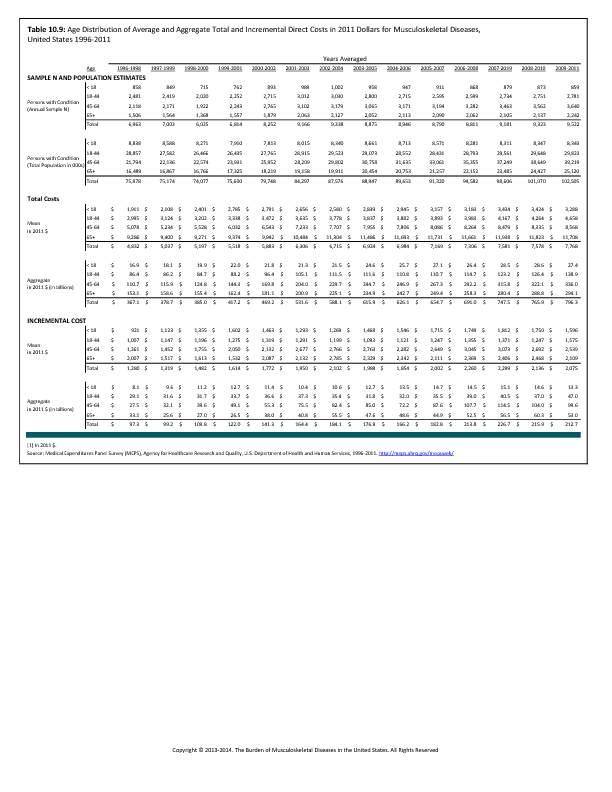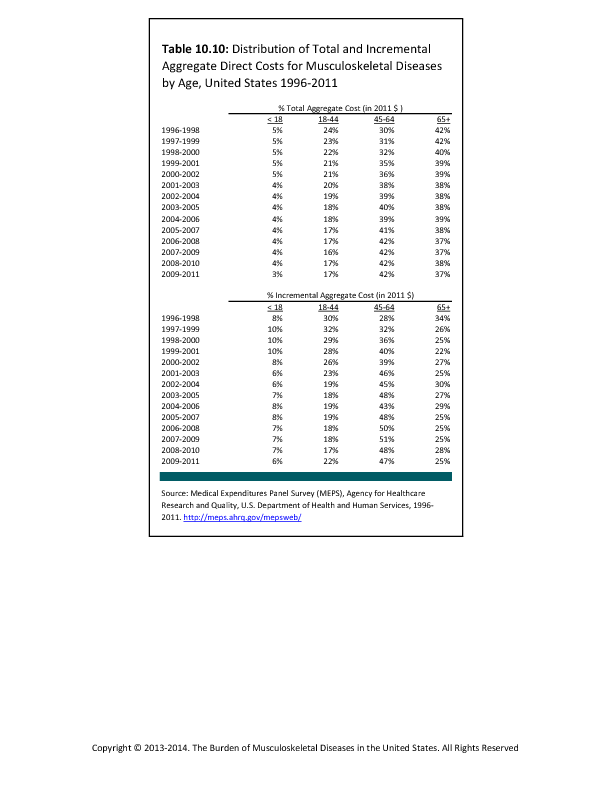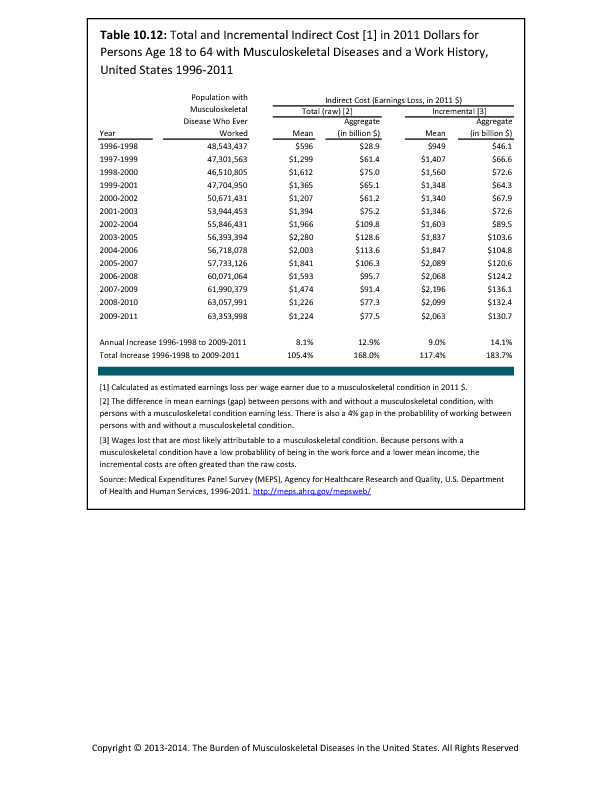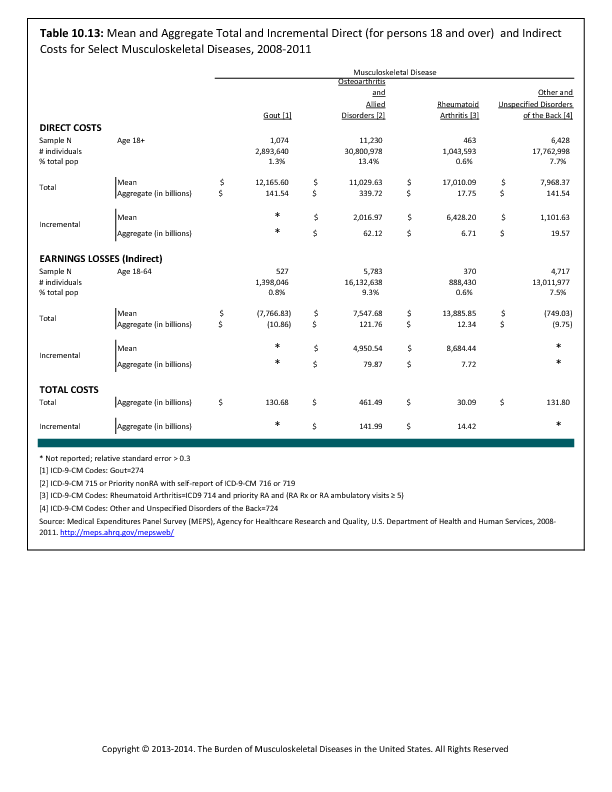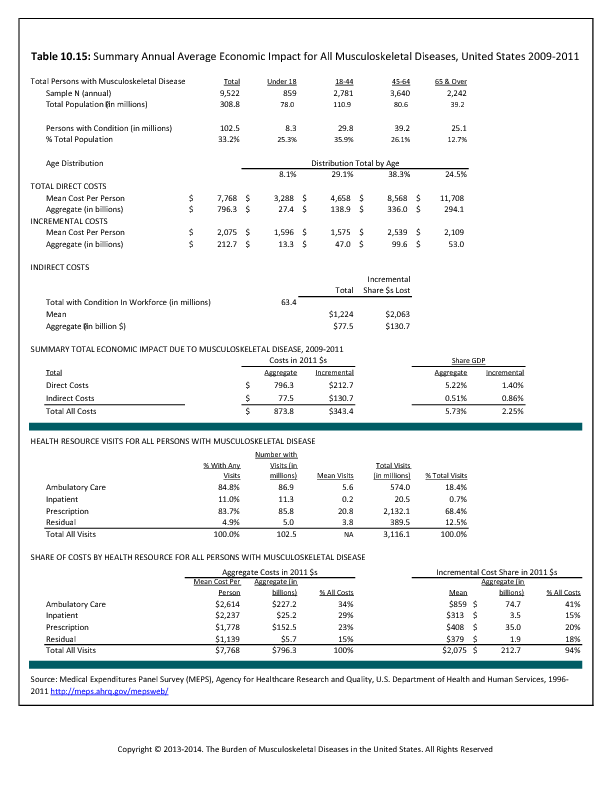While persons age 65 years and older represent about 25% of all persons with a musculoskeletal disease, this age group accounted for 37%, or $294.1 billion, of total aggregate health care costs for musculoskeletal diseases in 2009 to 2011. However, incremental aggregate musculoskeletal health care for the 65 years and older population is estimated to comprise 25%, or $53.0 billion, of the total $212.7 billion aggregate incremental cost of these conditions, in part because in this age group, high medical care costs become the norm. Persons age 45 to 64 years represent 38% of persons these ages with musculoskeletal conditions, but 42% of aggregate medical care costs and 47% of aggregate incremental costs. (Reference Table 10.9 PDF CSV and Table 10.10 PDF CSV)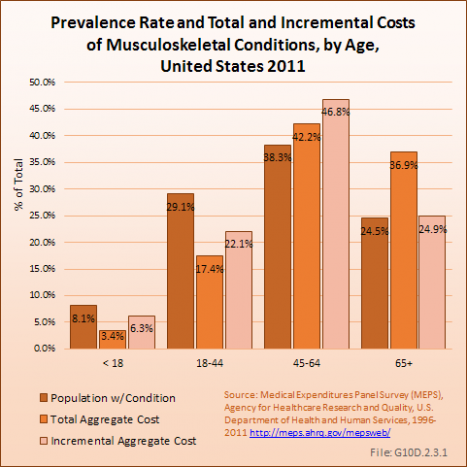
Estimated 2009 to 2011 aggregate total expenditures for persons age 18 to 64 years were $474.9 billion, or 60% of aggregate total health care expenditures for musculoskeletal diseases in that year. Thus, although musculoskeletal conditions are more prevalent with age, because of the size of the group 18 to 64 years, a majority of medical costs occur in the adult, nonelderly population. Only $27.4 billion of total aggregate musculoskeletal health care costs, or less than 4% of the total, went for persons under the age of 18 years.
The share of aggregate total and incremental costs accounted by persons 45 to 64 years has been growing over time, by 40% in relative terms for aggregate total costs (from 30% in 1996 to 1998 to 42% in 2009 to 2011) and by 68% in relative terms for incremental aggregate costs (from 28% in the first three years to 47% in the last three years). The share of total and incremental aggregate costs for all other age groups has been falling over this same period of time. The cumulative increase in aggregate cost has been 204% and 262%, respectively, for total and incremental costs from 1996 to 2011 for the 45- to 64-year age group, while all other age groups have increased between 60% and 92%. This reflects the importance of the size of the baby boom generation in overall musculoskeletal costs. However, that large cohort will soon be concentrated among the elderly and aggregate costs are likely to increase as a share of the total among those 65 years and older in the years to come. (Reference Table 10.10 PDF CSV; Table 10.11 PDF CSV)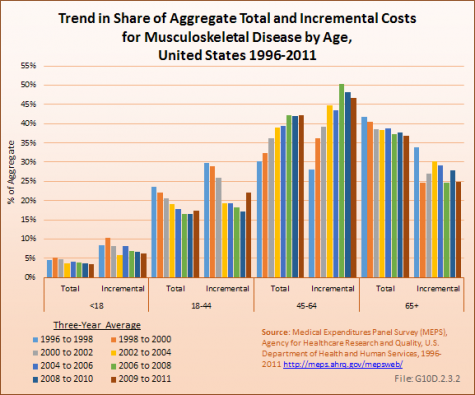
Edition:
- 2014

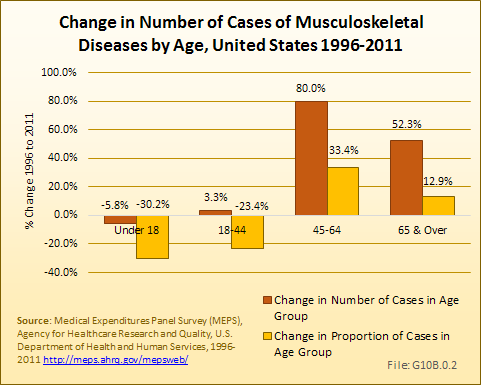

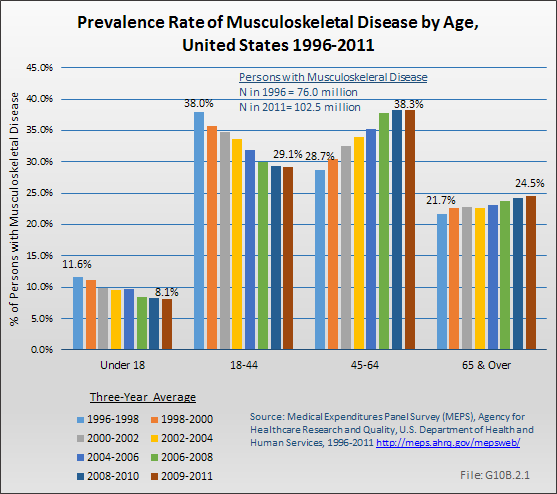


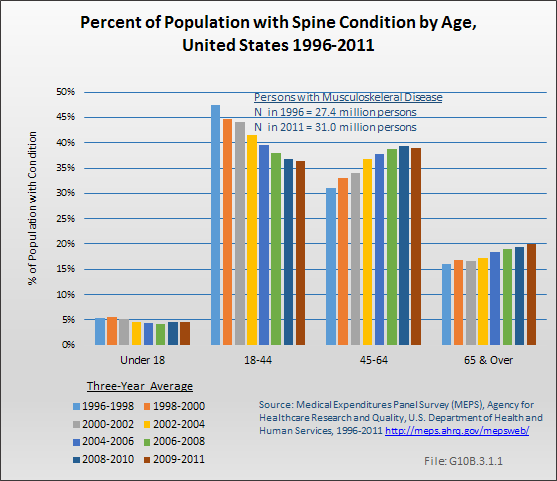
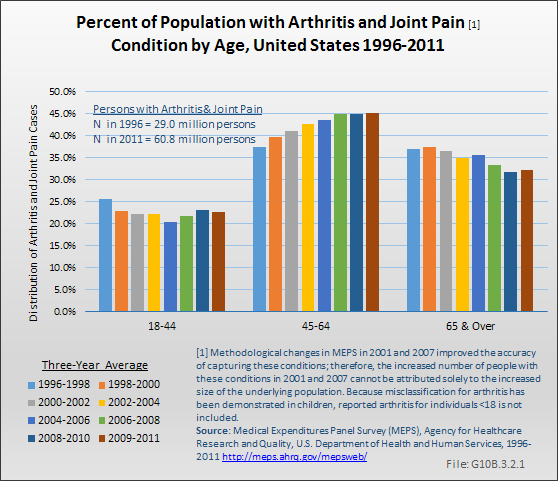

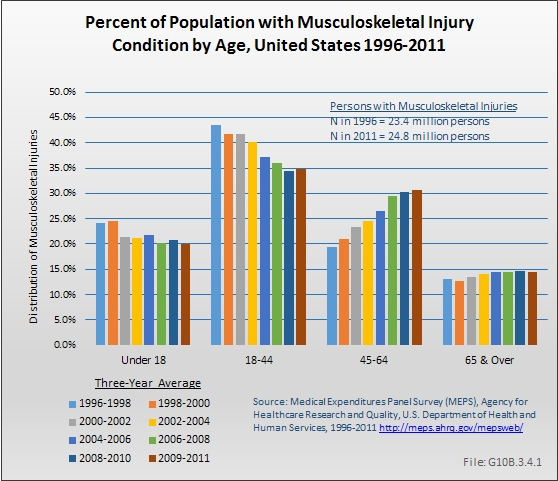
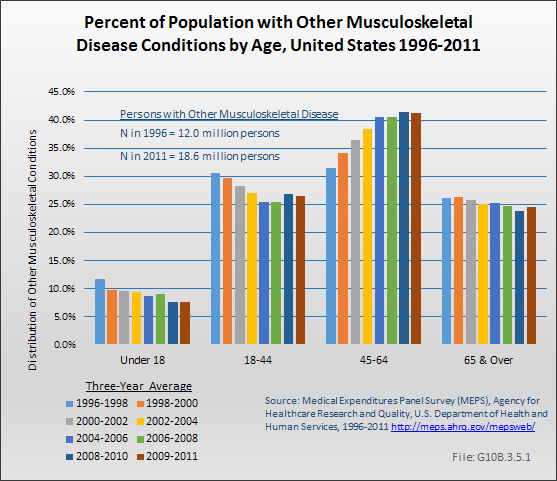
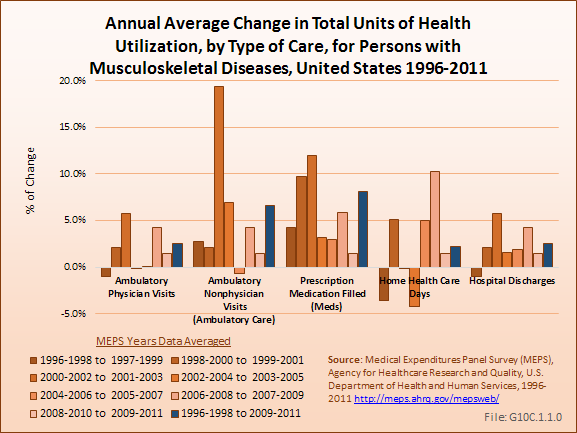
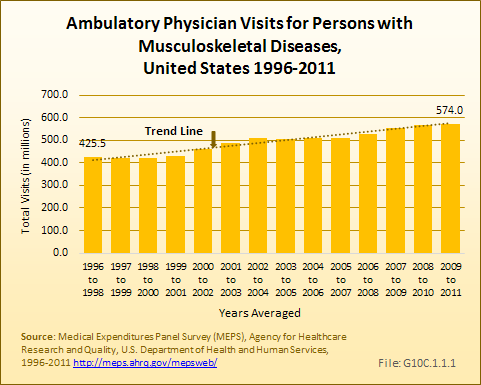
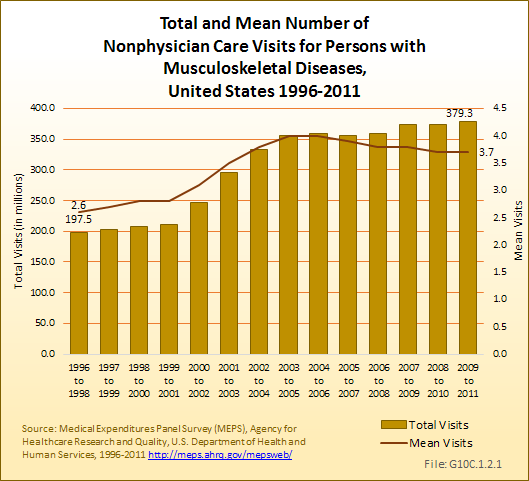
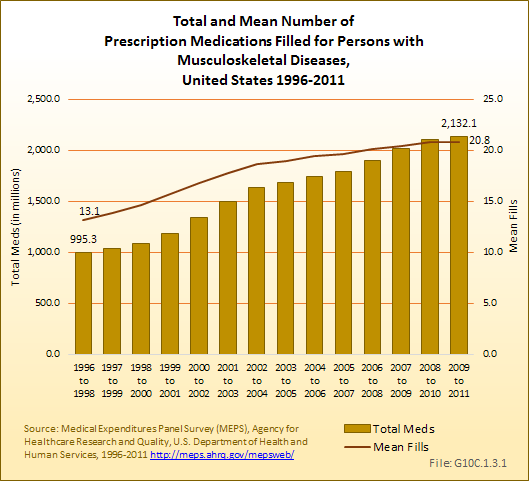
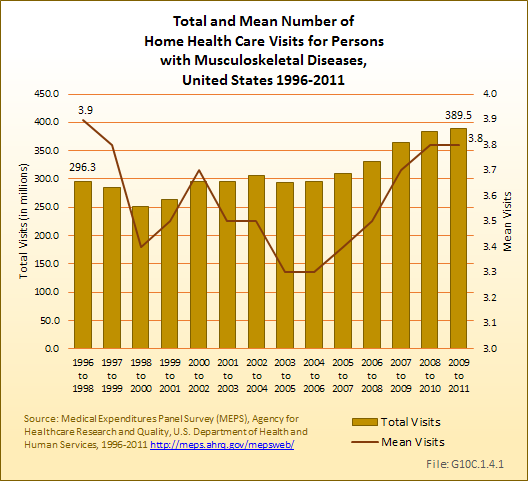
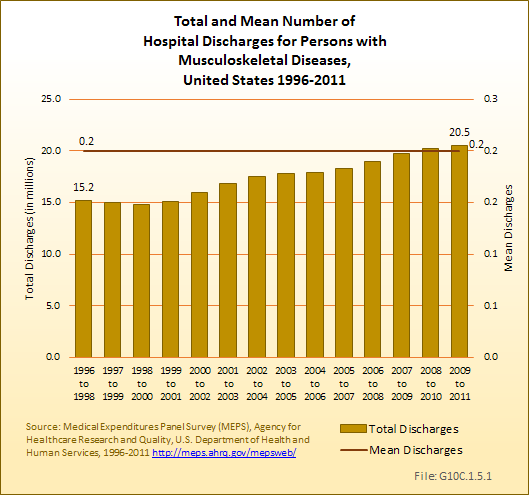


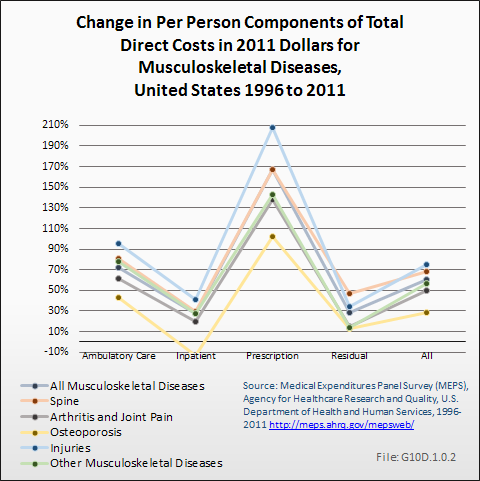
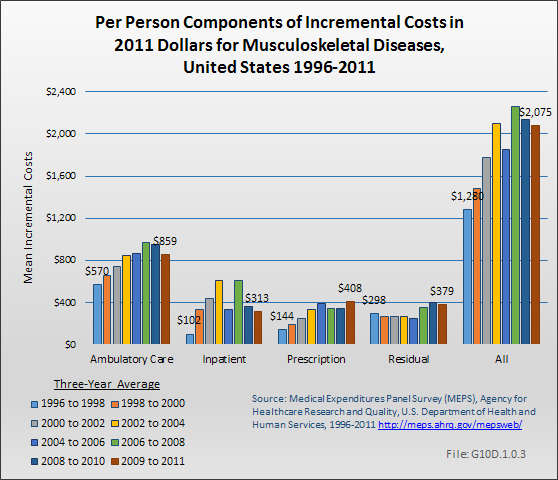
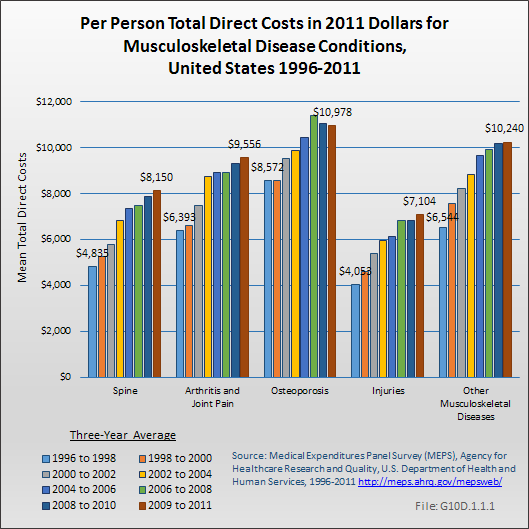

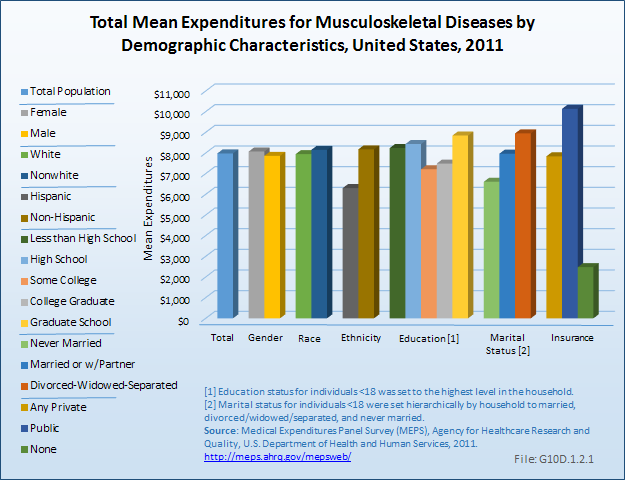
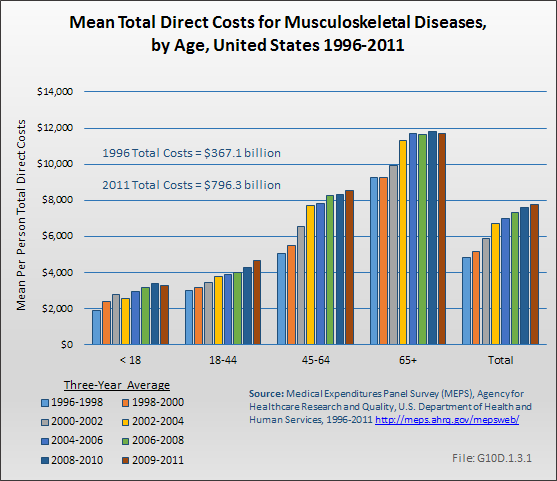
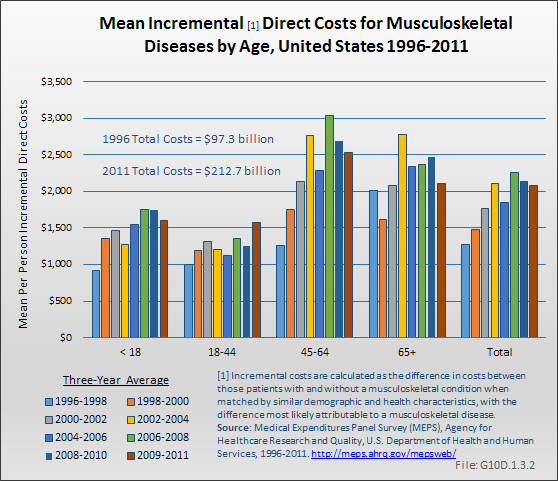


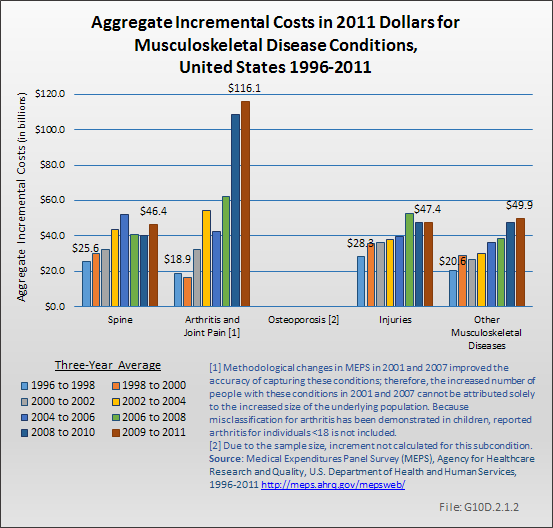
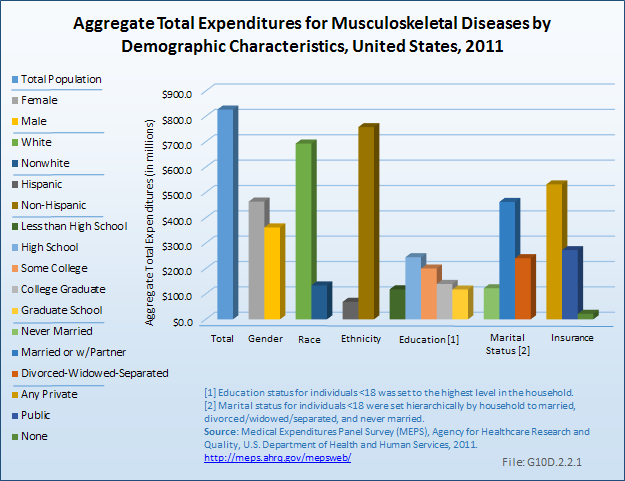


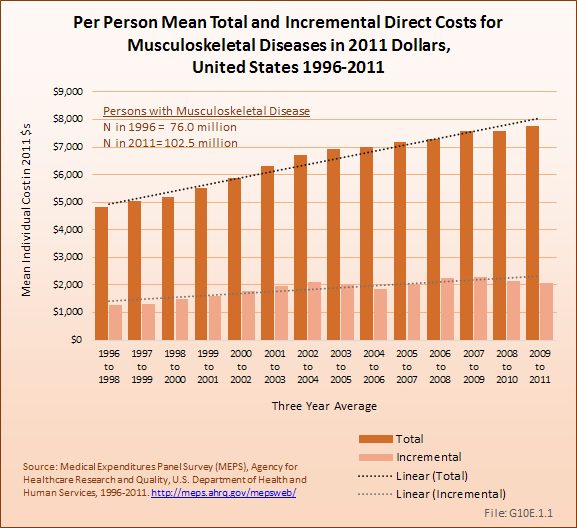


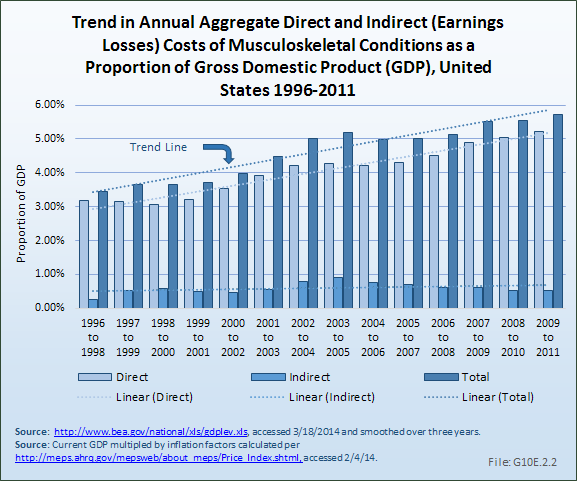
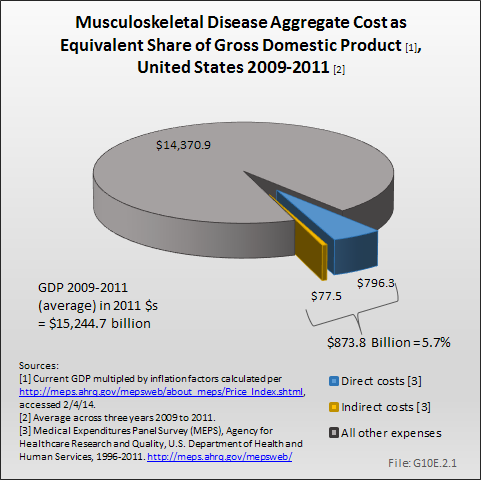

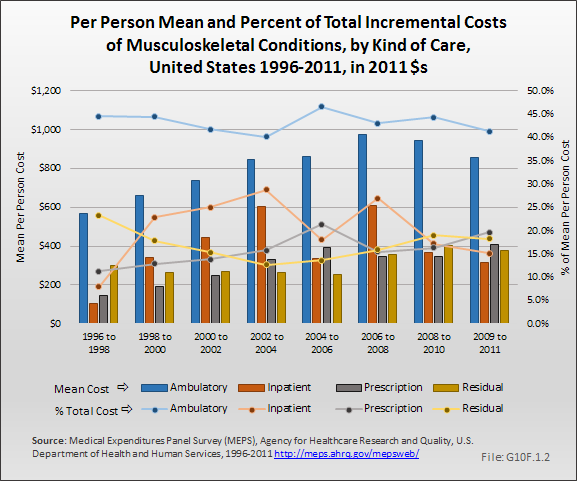
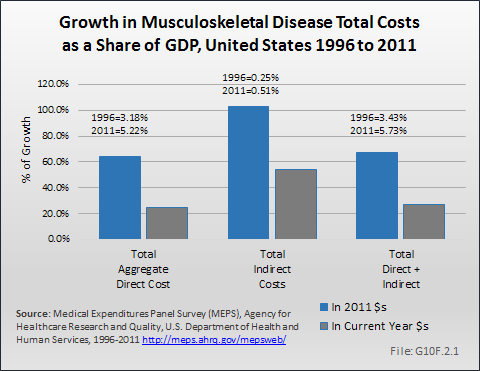
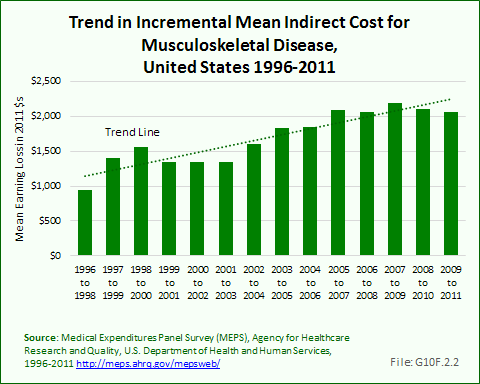

 Download as CSV
Download as CSV